60th Anniversary of the Founding of FFWPU-Japan
This week in history, October 1-7:
- HSA-UWC Japan is founded (October 2, 1959)
- Korea celebrates National Foundation Day (October 3, 2333 B.C.)
- True Parents proclaim Foundation Day for the Nation of the Unified World (October 3, 1988)
- The Inaugural Assembly is held for the Interreligious and International Peace Council (October 3, 2003)
- True Father is released from Seodaemun Prison (October 4, 1955)
- The Unification Church obtains legal standing in Korea (October 4, 1963)
- The Day of the Victory of Heaven is proclaimed (October 4, 1976)
- True Mother goes on a lecture tour of 40 universities in Korea (October 4, 1993)
- The Konron Maru Ferryboat is sunk (October 5, 1943)
- The first Holy Grounds are selected (October 5-7, 1962)
- True Father proclaims total liberation and unification between the physical and spiritual world (October 5, 1998)
- The Cheongpa Dong church is purchased (October 7, 1955)
October 2, 1959
HSA-UWC Japan is Founded
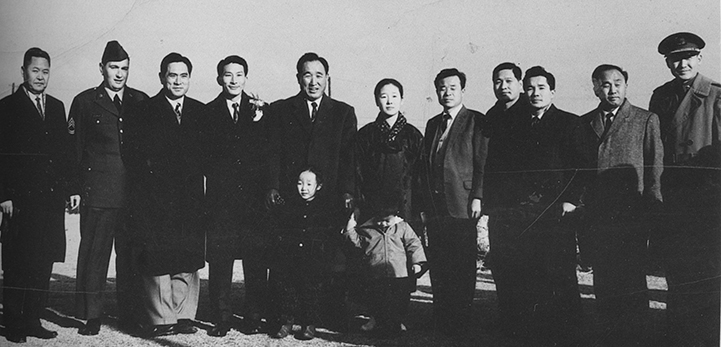
Missionary Sang-ik “Papa-san” Choi (fourth from left) on his way back to Japan following his first visit to Korea in seven years.
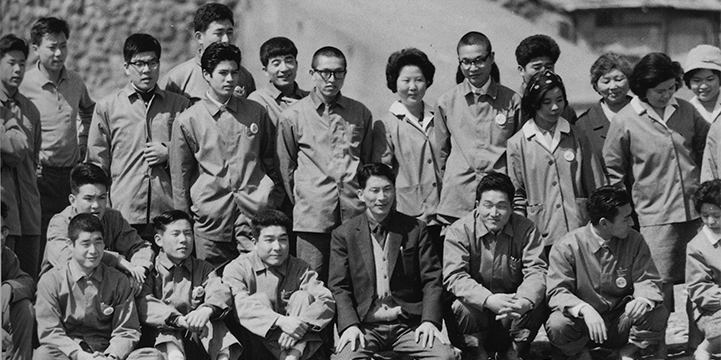
Missionary Choi and participants during the first special workshop held in Japan in 1963.
Sang-ik “Papa-san” Choi, known to Japanese Unificationists as Mr. Nishikawa, planted the seeds of the Unification movement in Japan from 1958 to 1964. Because Korea and Japan did not have diplomatic relations, he was arrested upon arrival in June 1958. Escaping confinement, he made his way to Tokyo where, after six months of struggle, he got a job as a salesman for a watch shop in the Shinjuku section. During the morning he worked, in the afternoon he witnessed. Once a week he rented the second floor of the shop to preach. On Sunday, October 2, 1959, he conducted the first Sunday service. Originally named the Holy Spirit Association for the Unification of World Christianity (HSA-UWC) Japan, Family Federation for World Peace and Unification (FFWPU) Japan commemorates this as its founding day.
October 3, 2333 B.C.
Korea Celebrates National Foundation Day

October 3 is a public holiday in the Republic of Korea (South Korea) as it celebrates its National Foundation Day. This national holiday, also known as “Tangun Day” and Gaecheon-jeol, commemorates the legendary founding of the Korean nation, the spiritual homeland of the Unification movement, or the creation of ancient Korea in 2333 B.C. by Tangun whereby the first Korean state was established. The Tangun legend not only reflects Korean ideals, but helped develop the pride of a people with a long history and an ancient culture. Through the centuries, Koreans have preserved this legend, which became a source of spiritual comfort in times of crisis.
October 3, 1988
True Parents Proclaim Foundation Day for the Nation of the Unified World
True Parents proclaimed the Foundation Day for the Nation of the Unified World on October 3, 1988, immediately following the completion of the Seoul Olympic Games. True Father explained that the realization of an ideal world must be achieved through external and internal unification. According to True Father, the key to external unification was the unity between democracy and communism, symbolically realized through the 1988 Seoul Olympics. To achieve the internal unification, True Parents declared the Foundation Day for the Nation of the Unified World. True Father envisioned the end of all national divisions and boundaries, saying that one day humankind should no longer need visas. In 2007, True Parents changed the name of the day from the “Foundation Day for the Nation of the Unified World” to the “Foundation Day for the Nation of Cosmic Unity,” which also is called the “Foundation Day for the Unified Nation of Heaven and Earth.” This indicated that the providence had advanced beyond the world to the cosmic level and that humankind could become “citizens of heaven.”
October 3, 2003
Inaugural Assembly Held for Interreligious and International Peace Council

The Interreligious and International Peace Council (IIPC) was created to “improve existing methods and practices for addressing critical global problems by being the leader in the moral or spiritual conscience in leadership governance.” Three hundred and four delegates, including 52 guests from the United Nations–representing 149 nations–attended the 4-day Inaugural Assembly in New York City with the theme “Global Governance for a New Realm of Peace.” True Father appropriately spoke on the topic “The New Elimination of Boundaries and World Peace.”
October 4, 1955
True Father is Released from Seodaemun Prison
On July 4, 1955, True Father and four Unification Church leaders were arrested on charges of illegal confinement and violation of military regulations, stemming from outreach efforts on Seoul’s Ewha Women’s University campus. This followed the dismissal of professors and expulsion of students who had joined the church. True Father was convicted and sent to Seodaemun Prison, a facility constructed by Japanese colonial authorities for the confinement and torture of Korean nationalists. True Father’s conviction was overturned on appeal, and he was released after three months on October 4, 1955. According to True Father, a number of prison officials “became part of our Unification family” following his release.
October 4, 1963
Unification Church Obtains Legal Standing in Korea
True Father and four disciples founded the Holy Spirit Association for the Unification of World Christianity (HSA-UWC), or the Unification Church, in May 1954. However, the church did not obtain legal standing until October 4, 1963. In effect, it was an underground church, particularly during the Syngman Rhee presidency (1948-60). After Rhee’s resignation and exile, there was more openness, especially as a result of the church’s efforts to promote literacy among Korea’s village populations and its campaign to arm police ideologically against communism. The church continued to face opposition and harassment, but it had surmounted legal barriers to its existence and development.
October 4, 1976
The Day of the Victory of Heaven
A little more than two weeks after the Washington Monument Rally and on the 26th anniversary of his release from Seodaemun Prison, True Father proclaimed the Day of the Victory of Heaven before several thousand Unificationists at Belvedere. He stated that the Washington Monument rally was an “unqualified victory” and that barriers in the spirit world had been broken down. This, he said, “will be reflected in the physical world.” He predicted that the movement would “take off in leaps and bounds from now” and discussed prospects in evangelism, business and educational activities. In fact, the Washington Monument campaign was a watershed event in the history of the Unification Church in America. It closed out the initial proclamation period of True Father’s ministry and opened the way for new initiatives in evangelism, education, interfaith relations, business, media and public life. The movement began to develop an infrastructure that greatly expanded its ability to exert influence in the United States and elsewhere.
October 4, 1993
True Mother’s Lecture Tour of Forty Universities in Korea
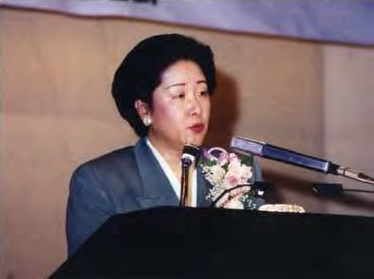
True Mother began a lecturing tour of forty major Korean universities, starting from Dangook University, on October 4, 1993. At each university, professors, students and prominent figures filled the lecture hall. Under the title “True Parents and the Completed Testament Age,” True Mother’s lecture called the young, intelligent university students to take the lead in opening a peaceful 21st century centered on true love.
October 5, 1943
Konron Maru Ferryboat is Sunk
True Father graduated from Waseda Koutou Kougakko, a technical engineering school affiliated with Waseda University, in Japan on September 30, 1943. He notified his family by telegram that he would return to Korea aboard the Konron Maru ferry on October 4. However, he had a premonition of danger, even feeling his “feet stuck to the ground,” and postponed his return. En route to Pusan, the Konron Maru was sunk. The New York Times reported on October 8 that an Allied submarine had sunk the ship at 1:00 am on October 5 and that only 72 of the 616 persons on board had survived. True Father recorded that when his mother heard the news that the ship he was scheduled to board was sunk, she “immediately ran out of the house without even thinking to put on her shoes,” running barefoot five miles to the train station and taking a train directly to Pusan. There, according to True Father’s autobiography, “She just kept calling my name, not even realizing that she had large splinters in her feet.” True Father often repeated this account as an illustration of his mother’s love.
October 5-7, 1962
First Holy Grounds Selected
True Father first used the term Seong Ji (Holy Ground) on January 1, 1963. He wrote the words “Holy Ground” in Chinese characters, and shared with those present his determination and plan to reclaim God’s lands symbolically, first through Holy Grounds and later by restoring the homeland. However, he did not select Holy Grounds until his first world tour in 1965. The first Holy Grounds were founded in Korea by several disciples between October 5 and 7, 1962, according to True Father’s instruction, before he himself actually established any. Four of them were founded in the north, south, east and west districts of Seoul. From January 28 through October 10, 1965, True Father made Holy Grounds in 39 nations. He returned to Korea and created Holy Grounds in each regional district before establishing the last seven (main) Holy Grounds in Seoul, including the one at Cheongpa Dong Church. The original four Holy Grounds founded by the disciples later were established as official Holy Grounds by Father as part of the seven Holy Grounds in Seoul. True Father would finish blessing 120 Holy Grounds throughout the world on January 1, 1966.
October 5, 1998
True Father Proclaims Total Liberation and Unification between the Physical World and the Spiritual World
On October 5, 1998, Koreans celebrated the holiday Chuseok, the day of the Autumn Moon Festival. On this day, True Father conducted a ceremony in São Paolo, Brazil, called the Total Liberation and Unification Day Ceremony. At that time he gave missions to certain countries to take charge of the saints in spirit world who were blessed at the June 13, 1998 Marriage Blessing Ceremony held at Madison Square Garden in New York City. He also gave missions to other founders of religions. He sent Jesus to the United States, Buddha to Korea, Confucius to China, Mohammed to the Islamic world, and Joseph and Mary to South America.
October 7, 1955
Cheongpa Dong Church Purchased
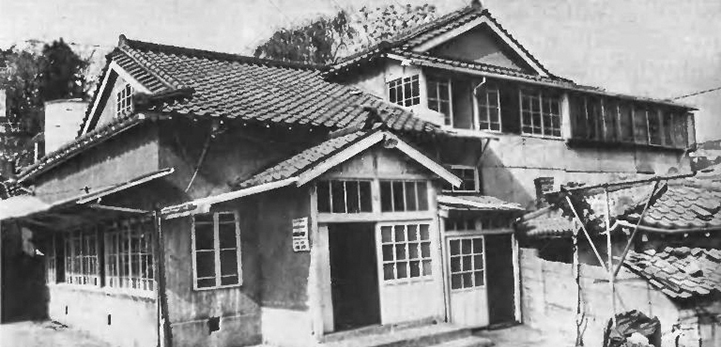
The old Cheongpa Dong church, formerly a Japanese temple, with its clay tile roof.
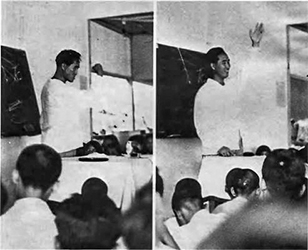
True Father teaching at Cheongpa Dong.
Three days after True Father’s release from Seodaemun Prison, the church borrowed 2 million won to purchase an abandoned building in poor repair on a hillside in Cheongpa Dong, Seoul. It reportedly had been a small Japanese Buddhist temple during the colonial era and one of many houses categorized as “enemy property.” This was the first property purchased by the Unification Church, which previously had occupied rented space, and served as its headquarters for the next 20 years. The Cheongpa Dong Church was the site of True Parents’ engagement and Holy Wedding ceremonies as well as the 36 and 72 Couples’ Holy Wedding ceremonies. It was also where the earliest editions of the Divine Principle were distributed and served as True Parents’ residence, where True Father planned much of the movement’s worldwide mission.
Later, while in the United States, True Father received word that members were planning to remodel the Cheongpa Dong Church. With great urgency he sent a telegram telling them to stop. True Father wrote in his autobiography, “This church embodies an irrecoverable period in my personal history, but more important than that, it testifies directly to the history of our church. … What matters is not some beautiful exterior but the secret life of tears that dwells within that building. … When I look at a particular pillar, I am reminded of a time when I clung to that pillar and wept over a particular matter … [it] makes me weep again. To see a door frame that is a little crooked reminds me of the past. … The floor boards where I bent over in prayer and shed so many tears are gone. … I … need memories of that pain. It doesn’t matter if the external style or appearance is old. Much time has passed, and now we have many churches that are well built. But for me, I would rather go to the small house on the hill in Cheongpa Dong and pray. I feel more comfortable there.”
This Week in History briefly lists significant events in the history of the Unification movement, the lives of the True Parents, and world events that are momentous to Unificationists. Most items are marked according to the solar calendar. Items marked “H.C.” correspond to the Cheon-gi or Heavenly Calendar, which is based on the lunar calendar. This installment covers the week of October 2 to 8.

